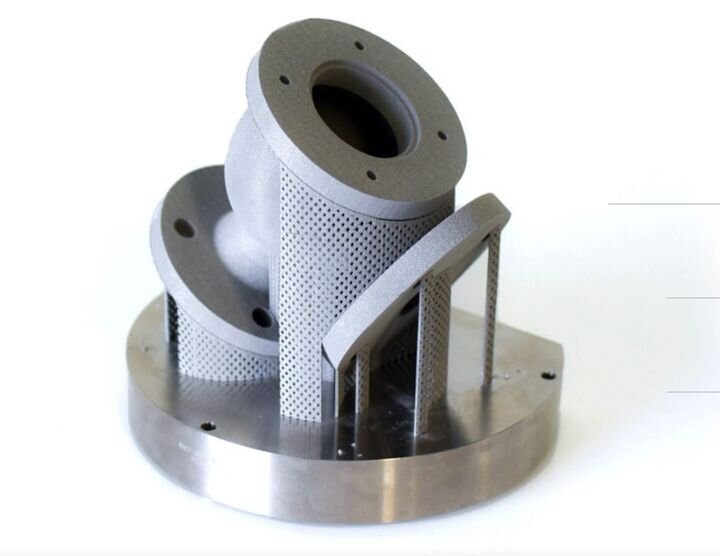![Metal 3D printed part [Source: Aurora Labs]](https://fabbaloo.com/wp-content/uploads/2020/05/image-asset_img_5eb050932814e.jpg)
Aurora Labs announced an important milestone in the development of their rapid metal 3D printing process.
The Australia-based company has been developing a radically different metal 3D printing process for several years that hopes to enable operators to 3D print one tonne of material per day.
The thinking is that such rapid production will be of considerable use to heavy industry located in remote areas, where shipment of spare parts is prohibitively expensive. Instead, Aurora Labs hopes to enable these operations to simply 3D print replacement parts on site.
Aurora Labs MCP
Their MCP, or “Multi-Layer Concurrent Printing” process is both familiar and unusual. It’s familiar because it uses the same powder bed / laser fusion approach used by so many other players. But it’s also unusual in that they’ve figured out a way to parallelize the process.
Basically they slide a kind of grate across the print surface, with each cell of the grate putting down fresh powder. Then, as the grate slides by, lasers selectively sinter the powder as it’s exposed by each grate cell.
The MCP process is eminently scalable, as the grate mechanism can have many cells, and it can be made wider as well. By these methods, Aurora Labs hopes to scale up the system to enable 3D printing one tonne of metal in 24 hours. Their latest speed tests show they’re well on the way to doing so.
But there’s always been a lingering question: even if Aurora Labs can 3D print metal objects at rapid speed, would the resulting parts be any good? There are many tales of 3D printed parts being less strong than equivalent parts made using traditional processes.
Would Aurora Labs’ parts be suitable strong?
Aurora Labs Certification
It turns out the company decided to test the parts they’ve been making with prototype equipment. They printed a series of metal coupons made from stainless steel 316L and sent them for testing at an independent lab in Australia. This particular lab is certified by the Australia’s National Association of Testing Authorities, their accreditation body.
The company is also able to 3D print a variety of other metals in addition to 316L, including 304, 309, Ti6Al4V, CP Titanium, Bronze, Inconel 718, Inconel 625, AlSi10Mg and AlSi7Mg. While this recent test is only for 316L, it’s likely they are doing testing and tuning for other materials as well.
Aurora Labs is developing what they call a “Parameter Properties Dataset”, a compendium of the material properties for the parts they are able to produce using MCP. With this testing, they are starting to fill in the blanks in this dateset, which, according to Aurora Labs, is to contain “mechanical, microscopic, x-ray and other” information.
The results? Aurora Labs says:
“The results of the tests show that the samples exceeded ASTM Standard A479/276 and f1384-16 in Ultimate Tensile Strength and Yield Strength and clearly demonstrates that the process meets or exceeds the relevant engineering standards that can be used for designing parts.”
The implication here is that this outcome suggests that parts 3D printed with MCP could be used instead of traditionally made parts. That’s a capability that will surely enable sales of equipment as buyers can have an assurance their prints can be placed into many types of production environments.
What’s next for Aurora Labs? I suspect we will see additional steps towards — or even the achievement of — the long awaited one tonne metal 3D prints in only 24 hours.
Via Aurora Labs

